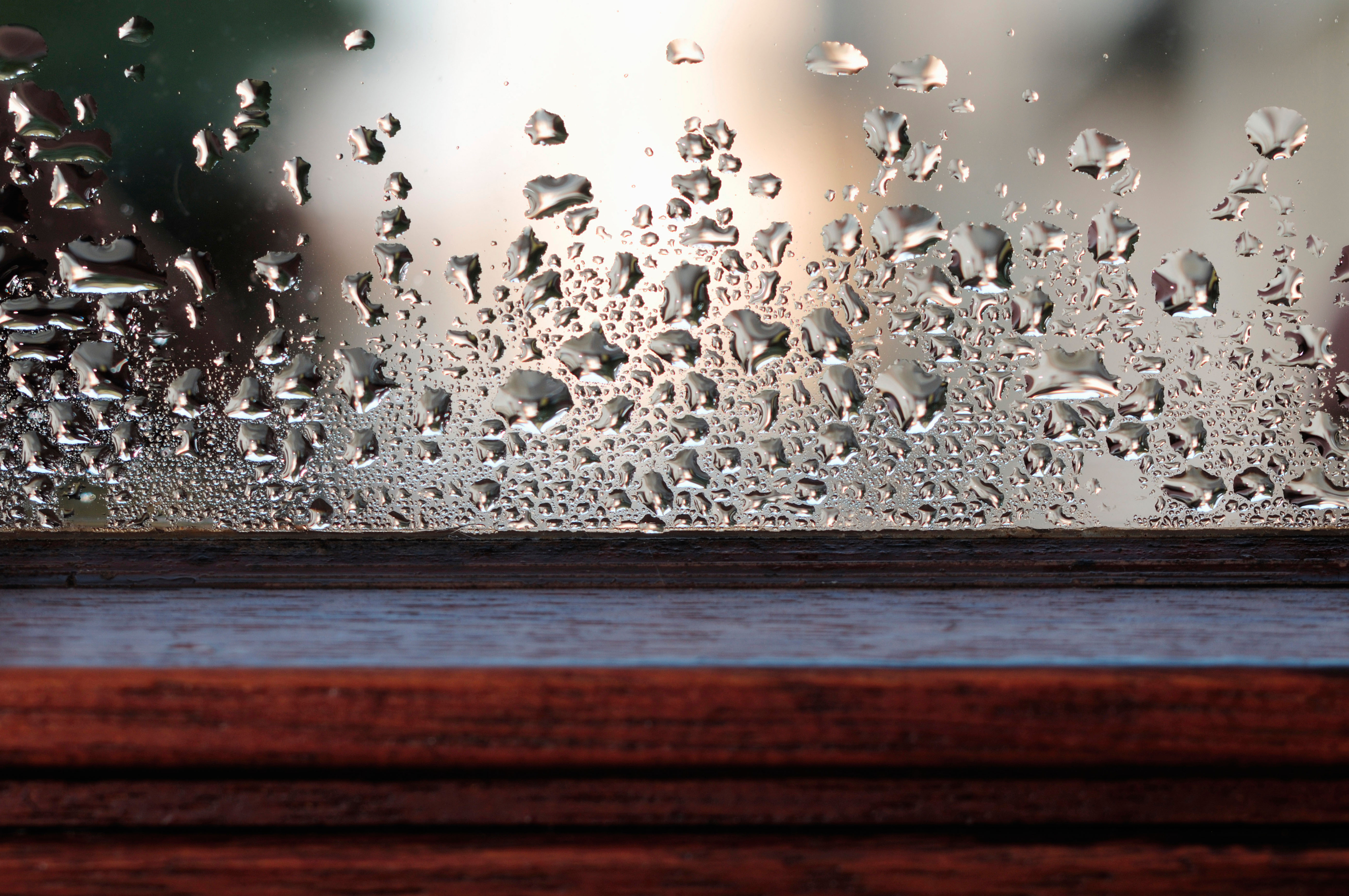How to get rid of condensation inside windows – 7 ways to protect your home
It's at this time of year that we want to know how to get rid of condensation inside windows – and this expert guide will give you all the essential information you need


Condensation on windows is just about unavoidable in colder months as we reduce ventilation to keep the cold air out and the warm air in. Condensation is annoying, but if tackled early, it needn't be as worrying as penetrating or rising damp, which are far more serious problems that need fixing by professionals.
Thankfully, you can tackle condensation on windows yourself – and quickly – without being anxious about the structural elements of your house design.
Why does condensation appear inside windows?
Condensation inside windows – whether single- or double-glazed – happens when cold windows and warm, moist, indoor air collide.
'Condensation occurs when there is excess moisture in the air, and is most likely to happen in rooms of the home that naturally generate extra moisture regularly, such as bathrooms and kitchens,' says Jenny Turner, Property Manager at Insulation Express.
'During the winter months, condensation can also appear on the inside of our windows in bedrooms due to warm air and breath hitting the cold surface of the window.'
Is condensation on the inside of windows serious?
'The least that can happen is that condensation blocks your view through the window; continuous condensation, especially if left to pool around window frames and sills, can damage the material the window is made from if the finish isn't 100% perfect, causing wood to mold and warp, and metal to rust,' advises Lucy Searle, Homes & Gardens' Editor in Chief.
Condensation can also be the root cause of mold – often seen as black spots on walls and ceilings. Breathing mold spores in over time is bad for your health, and needs to be tackled quickly – though there is little point in doing so if you don't take on the condensation, too.
'Reducing the condensation in your home will lead to less risk of mould and damp developing, which can cause minor respiratory problems and other health issues if not handled correctly,' warns Jenny Turner.
Bear in mind that condensation doesn't just gather on windows. 'Where windows are double-glazed, condensation often occurs on the adjacent plaster reveals instead,' says Douglas Kent of the Society of Ancient Buildings.
It will also manifest anywhere cooler than a damp room's air temperature – so inside a closet that sits on a home's exterior wall, and north-facing walls in particular, for example. If this isn't remedied, whatever is inside will quickly become affected.
How to get rid of condensation inside windows
There are many easy and quick ways to get rid of condensation inside windows – plus more dramatic, long-term approaches that will see it disappear more permanently.
1. Open windows – and drapes
The simplest way to get rid of condensation inside windows is to just open them, even a crack. Doing so reduces the room's humidity dramatically.
'The key to reducing occurrences of condensation is to improve ventilation by opening windows after showers and baths in the bathroom,' advises Jenny Turner.
This needn't mean that you have windows open all night on a cold night, but airing a bedroom for half an hour after you wake up, cracking open a window while you are cooking or after you have taken a shower will all work to reduce and even get rid of condensation on windows, walls and hidden away inside closets and cabinets.
In the mornings, open drapes or blinds, too. This will help with air circulation around the window and help get rid of the condensation faster. It will also ensure your drapes don't start to grow moldy patches.
2. Only consider insulation alongside ventilation
'If you are considering insulating your home, bear in mind that sealing up a home will make condensation inside windows more likely, unless the rooms are ventilated, too,' warns Melanie Griffiths, Editor of Period Living magazine.
As we saw above, simply opening a window – such as when cooking or after a shower – can dramatically reduce condensation, but if you are doing a whole-house remodel, you may want to consider a whole-house ventilation system. At the very least, cooking and wash spaces ought to have an extractor or ventilation fan installed.
'You can either install a standard fan which is controlled by a switch or humidistat fan that automatically turns on and off depending on a timer or until the steam and condensation has cleared,' advises Garry Kirkbright, Senior Designer at More Bathrooms.
'Don't just look for condensation in rooms you use – an unused attic can be prone to condensation, as can basements used for laundry,' warns Melanie Griffiths. 'If there are no windows in these spaces, a vent or an extractor fan is useful, though a dehumidifier is a very low-cost way to keep damp rooms condensation- and mold-free.'
3. Invest in moisture-loving house plants
We love to turn to nature to find solutions to our homes' problems – and once again, house plants come to the rescue. Known to reduce condensation, humidity-loving house plants, such as orchids, bromeliads and tillandsia, absorb moisture from the air and even their leaves.
4. Keep heating on low, constantly
One of the reasons you will find condensation inside windows is that the air inside the room is much warmer than the air outside. A way to tackle this is to ensure your room's temperature doesn't vary too wildly. Having no heating on in a bedroom at night, but setting the radiators to high for when you wake up is more likely to result in condensation. It's better to keep heating on low all the time instead.
This, however, isn't an ideal solution, especially if you are trying to keep heating costs down or be more eco-friendly in your approach to heating your home.
5. Ensure windows are double-glazed
Double-glazed windows are much less likely to suffer from condensation, keep your rooms warmer and more energy-efficient too. If, however you are getting condensation inside double-glazed windows, it's likely that the unit isn't properly sealed. There may be an obvious fix you can do yourself, but it's likely you will need a profession company to deal with the problem.
6. Stop moisture reaching your windows
'One way to get rid of condensation inside windows is to limit the spread of moisture,' advises Andrea Childs, Editor of Country Homes & Interiors magazine. 'So, if you are cooking, put lids on saucepans, shut the kitchen door and crack open windows or switch on the extractor fan; if you are showering, shut the bathroom door, ensure the extractor fan is one and open the window afterwards; keep the laundry room door and make sure it's ventilated or that you have dehumidifier running when washing is drying – better still, dry it outdoors on a bright day. Living in a small home?
Avoid drying clothes on radiators – match up a folding drying rack and a small dehumidifier instead. Ensure dryer vents are kept fluff-free, too, so that you can be sure they are working efficiently.
7. Wipe away condensation to remove it fast
Depending on the severity of the problem, you can get rid of condensation inside windows with anything from a simple microfiber cloth to a window vacuum, which is usually used for cleaning windows. Using the dish soap window condensation hack can keep moisture build up at bay for a week at a time.
Can you get moisture out of a double pane window?
The best and quickest way to get moisture out of double pane window is with one of the best dehumidifiers – although a hairdryer can provide a quick fix, too. A more permanent solution is to identify whether the seal around the unit is damaged, allowing moisture to gather within the gap between the two panes. Once fixed, the moisture problem should go away.
Why am I getting condensation inside my windows?
It is likely you are getting condensation inside your windows because there is too much moisture inside your house and the room's temperature is much warmer than that of the exterior of the panes. The warm air condenses on the cold windows and turns to moisture – condensation. You can mitigate this by opening the windows, improving the ventilation of your home more generally, running a dehumidifier and reducing moisture with extractor fans, and by closing doors in which you are cooking or washing yourself or laundry.
Sign up to the Homes & Gardens newsletter
Design expertise in your inbox – from inspiring decorating ideas and beautiful celebrity homes to practical gardening advice and shopping round-ups.

Lucy Searle has written about interiors, property and gardens since 1990, working her way around the interiors departments of women's magazines before switching to interiors-only titles in the mid-nineties. She was Associate Editor on Ideal Home, and Launch Editor of 4Homes magazine, before moving into digital in 2007, launching Channel 4's flagship website, Channel4.com/4homes. In 2018, Lucy took on the role of Global Editor in Chief for Realhomes.com, taking the site from a small magazine add-on to a global success. She was asked to repeat that success at Homes & Gardens, where she has also taken on the editorship of the magazine.
-
 Ina Garten's storage pantry is an insightful window into all of the best cookware used by the chef – and it's easy to recreate on your kitchen shelves from $48
Ina Garten's storage pantry is an insightful window into all of the best cookware used by the chef – and it's easy to recreate on your kitchen shelves from $48The beautiful dishware in The Barefoot Contessa's Hamptons pantry showcases the tools she uses most often to cook – this is exactly how you replicate it
By Sophie Edwards Published
-
 Extend the lifespan of your appliance with 5 simple but crucial washing machine maintenance tips
Extend the lifespan of your appliance with 5 simple but crucial washing machine maintenance tipsFrom cleaning the filters to keeping the door open, experts reveal the washer tips they swear by
By Andy van Terheyden Published